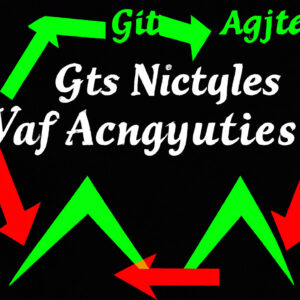Welcome to my blog! Discover the answer to the intriguing question: Can Prim’s algorithm have negative cycles? Unravel the complexities of this fascinating algorithm and its potential implications.
Exploring the Possibility of Negative Cycles in Prim’s Algorithm: A Comprehensive Analysis
In the field of algorithms, Prim’s Algorithm is a popular greedy algorithm used for finding the Minimum Spanning Tree (MST) of a connected, undirected graph. The algorithm constructs an MST by selecting edges with the smallest weight that connects two vertices without forming cycles. This ensures the final tree consists of the minimum possible total edge weights.
However, an intriguing question arises – is it possible for Negative Cycles to exist within Prim’s Algorithm? To analyze this, we must first briefly discuss the nature of negative cycles and their implications on algorithms.
A negative cycle is a cycle in a graph where the sum of edge weights along the cycle is negative. Negative cycles can cause issues for some optimization algorithms, such as the Bellman-Ford algorithm in finding shortest paths. However, when considering Prim’s Algorithm, we must explore if negative cycles pose any threat or even exist in this context.
It is important to mention that Prim’s Algorithm works with non-negative and negative edge weights. The algorithm’s primary goal is to find the Minimum Spanning Tree, which means the tree with the lowest total edge weight cost, irrespective of individual edge weights.
Upon closer examination, one would find that Prim’s Algorithm inherently avoids cycles in its process. While constructing the MST, the algorithm proceeds by adding vertices one at a time while ensuring that each new vertex does not form a cycle with the existing vertices in the MST. As a consequence of this construction, it is impossible for a cycle, whether positive or negative, to be introduced into the MST through the use of Prim’s Algorithm.
In conclusion, the idea of negative cycles in Prim’s Algorithm is a conceptually interesting question. However, due to the algorithm’s inherent nature of avoiding cycles altogether during its construction process, it cannot produce negative cycles within the Minimum Spanning Tree.
How does Prim’s algorithm handle negative edge weights, and can it result in negative cycles?
In the context of algorithms, Prim’s algorithm is a greedy algorithm used to find the minimum spanning tree for a connected, undirected graph with weighted edges. Its primary goal is to determine the lowest cost way to connect all vertices while avoiding cycles.
Handling negative edge weights: Prim’s algorithm can handle negative edge weights efficiently. During the algorithm execution, an edge with a negative weight will be considered and chosen if it leads to a lower overall cost for the minimum spanning tree. It’s important to note that the presence of negative edge weights does not affect the algorithm’s ability to find the optimum solution.
Negative cycles: A cycle is a sequence of edges in a graph that begins and ends at the same vertex. In the case of Prim’s algorithm, negative cycles are not a concern because the algorithm is specifically designed to avoid creating cycles. The minimum spanning tree generated by Prim’s algorithm will always be a tree and, as a result, cannot contain any cycles—negative or otherwise.
In summary, Prim’s algorithm efficiently handles negative edge weights and ensures that the resulting minimum spanning tree does not contain any cycles, including negative cycles.
What are the implications of having negative cycles in a graph when using Prim’s algorithm for finding the minimum spanning tree?
Prim’s algorithm is used to find the minimum spanning tree (MST) of a connected, undirected graph with positive edge weights. A minimum spanning tree is a tree that spans all vertices in the graph while minimizing the total edge weight.
When there are negative cycles in the graph, Prim’s algorithm may not produce accurate results, as it is not designed to handle negative edge weights. A cycle is considered to be negative when the sum of its edge weights is negative.
Negative cycles can lead to some potential issues when using Prim’s algorithm:
1. Inaccuracy: The algorithm might not find the actual minimum spanning tree due to the presence of negative cycles, as it optimizes locally by selecting the smallest edge at every step.
2. Non-convergence: In some cases, depending on the graph structure, Prim’s algorithm might not converge to a solution and instead get stuck in a loop, as it continually tries to find a smaller MST.
3. Non-optimality: Even if the algorithm does produce a minimum spanning tree, it might not be globally optimal due to the presence of negative cycles. This could lead to higher-than-necessary total edge weights for the spanning tree.
It is essential to note that Prim’s algorithm is not suitable for graphs with negative edge weights or negative cycles. Alternative algorithms, such as Bellman-Ford or Floyd-Warshall, should be considered in such cases as they are designed to handle negative edge weights and negative cycles.
In the context of Prim’s algorithm, how can we detect and manage negative cycles when generating a minimum spanning tree?
In the context of Prim’s algorithm, detecting and managing negative cycles when generating a minimum spanning tree (MST) is not applicable. This is because Prim’s algorithm is designed to work on undirected and connected graphs with non-negative edge weights.
However, it is important to note that negative cycles typically come into play when discussing algorithms for finding shortest paths, such as the Bellman-Ford algorithm or Floyd-Warshall algorithm. These algorithms are designed to handle graphs with negative edge weights and can detect negative cycles during their execution.
In summary, considering negative cycles in the context of Prim’s algorithm is unnecessary, as it only works with undirected graphs and non-negative edge weights when generating a minimum spanning tree.


